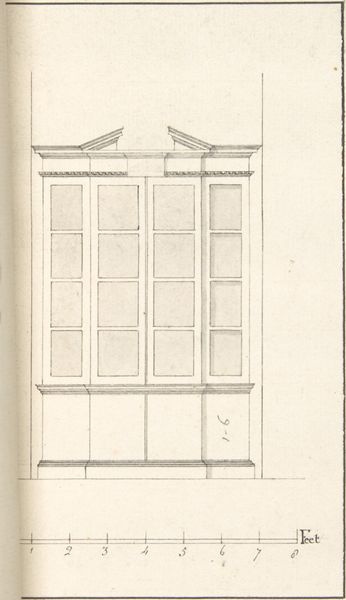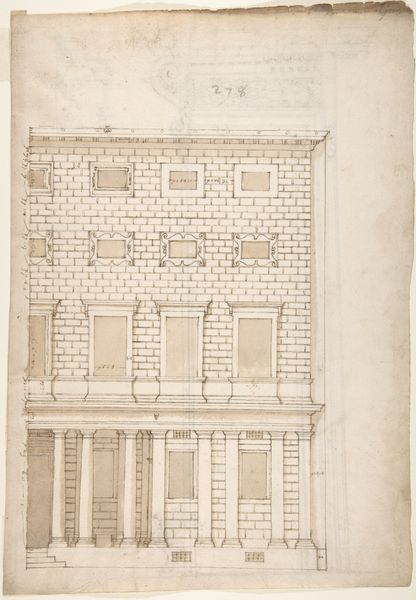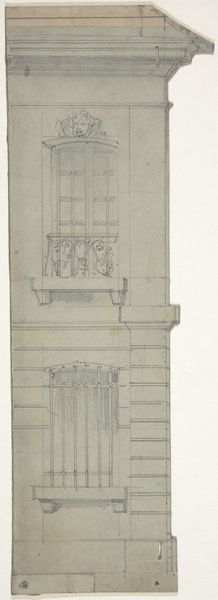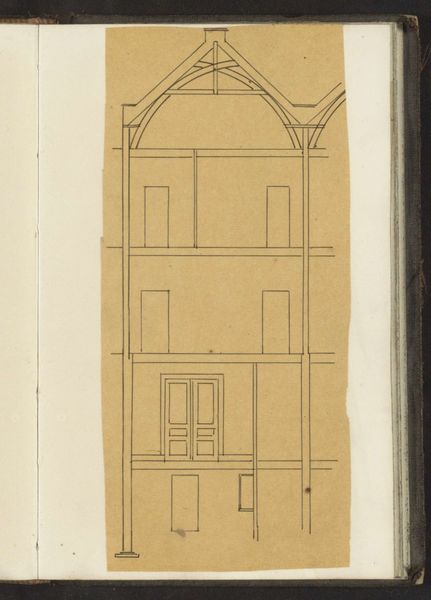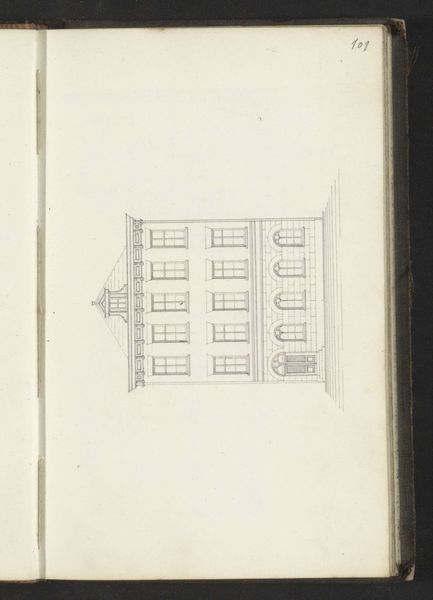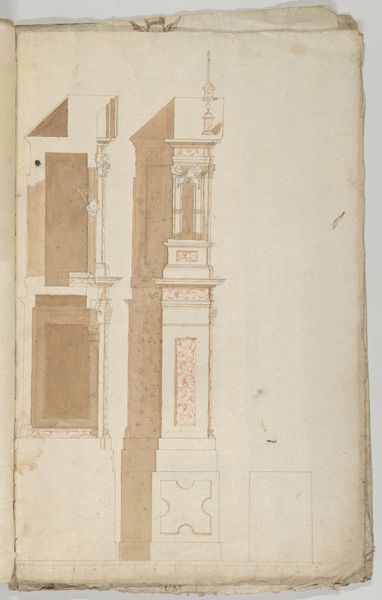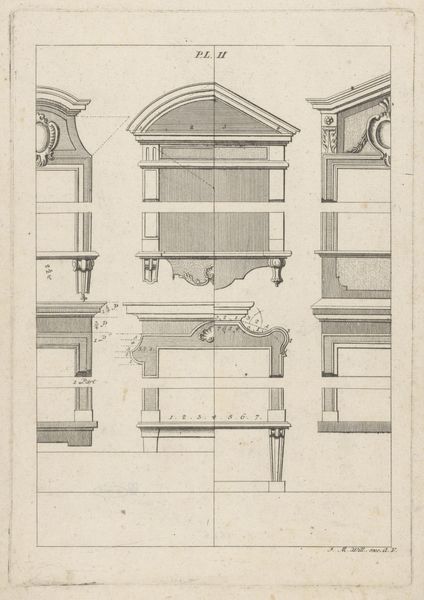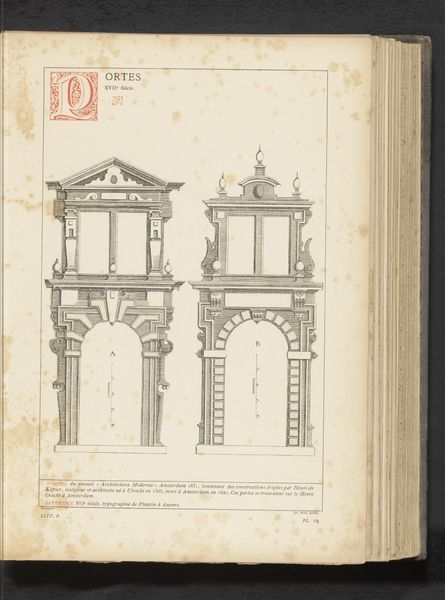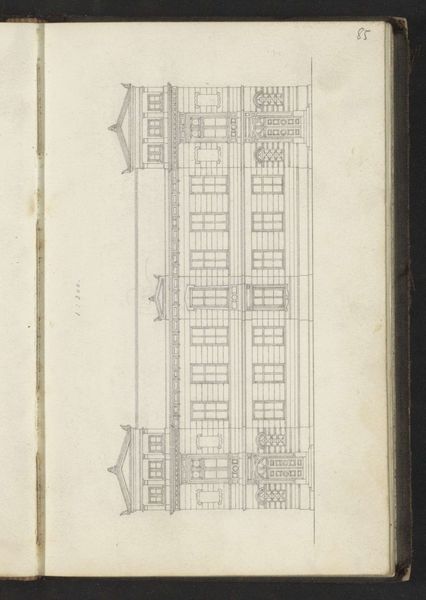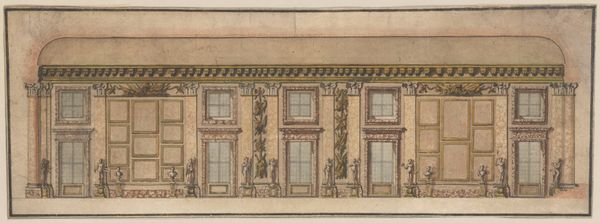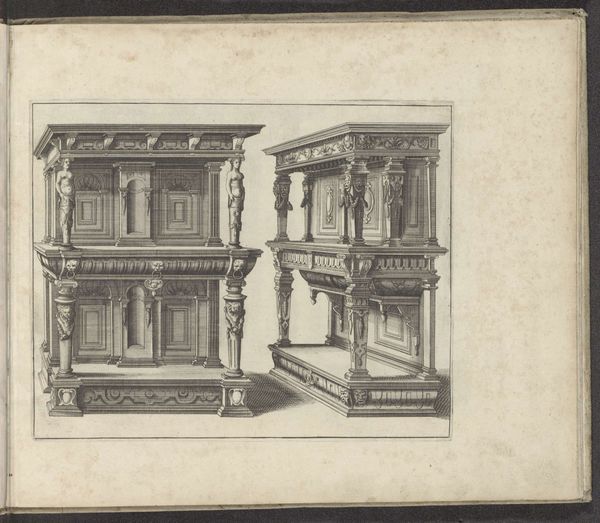
Opstand van de pui van een winkelpand aan de Kalverstraat te Amsterdam c. 1864
0:00
0:00
drawing, paper, pencil
#
drawing
#
paper
#
form
#
pencil
#
line
#
cityscape
#
building
Copyright: Rijks Museum: Open Domain
Curator: This sketch, likely dating to around 1864, presents us with Willem Springer Jr.’s “Opstand van de pui van een winkelpand aan de Kalverstraat te Amsterdam.” Executed in pencil on paper, it depicts the facade of a storefront on Amsterdam's Kalverstraat. Editor: Immediately, I notice the precision. The linework is so clean, almost architectural in its exactitude. It’s simple, but the detail draws me into imagining the Amsterdam of the mid-19th century. There’s a starkness, too – a sense of documentation, rather than romanticism. Curator: That precision aligns with Springer’s historical moment. The mid-19th century witnessed a growing interest in documenting urban environments, fuelled by burgeoning city planning and historic preservation movements. Artists started adopting the role of chroniclers of change. We see echoes of the influence of the École des Beaux-Arts here. Editor: Absolutely, and it highlights the socioeconomic transformations underway. The detailed depiction of the shop front suggests burgeoning consumerism, while the relative austerity of the upper floors maybe signals the class divisions embedded in the urban fabric. The drawing seems so deliberately objective, yet it can't help but capture the undercurrents of a society in transition. Curator: The choice of medium too—pencil, with its capacity for detail yet also its inherent transience—speaks to this moment of flux. Drawings like these provided valuable visual records for urban planners and historians documenting the city's transformation. Editor: And think about the potential shoppers. Were women welcome there, or not? Where the working class given entry, or turned away? Curator: Good point, thinking about that public role. The Kalverstraat was and is a prominent shopping street. Considering its place within a broader historical context makes us question who had access and agency within these emerging public spaces. Springer’s sketch then, becomes more than just a record; it is an entry point into considering questions of power and accessibility. Editor: It shows how even what looks like the most neutral urban sketch carries the traces of the social relations that shaped its creation and continues to shape our understanding of the past. The potential of one old street, no? Curator: Absolutely, looking at it from this perspective we recognize its worth when piecing together an image of life during the mid-1800s.
Comments
No comments
Be the first to comment and join the conversation on the ultimate creative platform.
